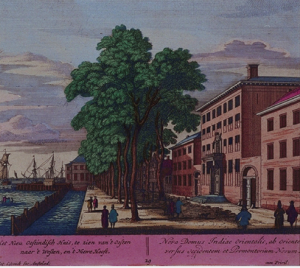[:nl]
Historical Background
Rotterdam has played a role in the history of Dutch slavery in a variety of ways. The most direct involvement was through the slave trade by the firm of Coopstad & Rochussen. In the 18th century the monopoly of slave trade by the West Indian Company elapsed and the WIC permitted Coopstad & Rochussen to take on the slave trade directly. Over the next 30 years they transported over 20.000 enslaved in badly aired holds across dangerous routes from the coast of West Africa to the Americas. The producers of trade goods and ships’ goods and services (rope, carpentry) in the Rotterdam harbour profited indirectly from this succesful trade.
Though the slave trade stopped in the 19th century, Rotterdam remains of interest for the history of slavery. Contrary to the United Kingdom and France the Netherlands had no widely supported movement for abolitionism. One of the few civil initiative against slavery originated in Rotterdam. 128 ladies of The Rotterdam Ladies Antislavery Committee – mainly living in the English speaking, international part of the city – signed a petition they presented to King William II.
Traces
There is a large presence of descendant communities from the Caribbean in Rotterdam. They initiated a slavery monument in Rotterdam, as it was an important slave trade harbor. The monument was revealed in June 2013, located at the former harbour. The city center of Rotterdam changed a lot because of the bombing in the Second World War. Many historical buildings and physical traces have been erased.
Curious about slavery heritage in different regions of the Netherlands? Take a look at our other maps.



